Eunji Lee
Habaek: High-performance water segmentation through dataset expansion and inductive bias optimization
Oct 21, 2024Abstract:Water segmentation is critical to disaster response and water resource management. Authorities may employ high-resolution photography to monitor rivers, lakes, and reservoirs, allowing for more proactive management in agriculture, industry, and conservation. Deep learning has improved flood monitoring by allowing models like CNNs, U-Nets, and transformers to handle large volumes of satellite and aerial data. However, these models usually have significant processing requirements, limiting their usage in real-time applications. This research proposes upgrading the SegFormer model for water segmentation by data augmentation with datasets such as ADE20K and RIWA to boost generalization. We examine how inductive bias affects attention-based models and discover that SegFormer performs better on bigger datasets. To further demonstrate the function of data augmentation, Low-Rank Adaptation (LoRA) is used to lower processing complexity while preserving accuracy. We show that the suggested Habaek model outperforms current models in segmentation, with an Intersection over Union (IoU) ranging from 0.91986 to 0.94397. In terms of F1-score, recall, accuracy, and precision, Habaek performs better than rival models, indicating its potential for real-world applications. This study highlights the need to enhance structures and include datasets for effective water segmentation.
Deep-learning-driven end-to-end metalens imaging
Dec 05, 2023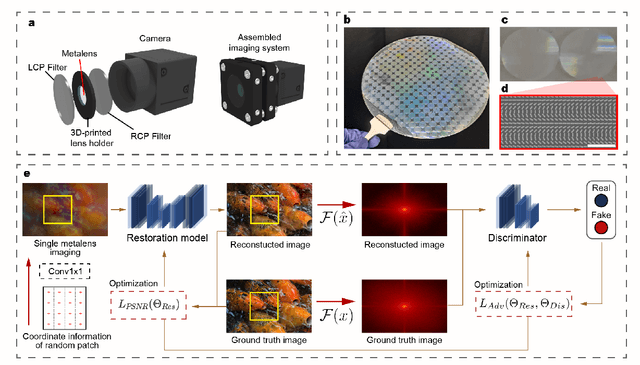

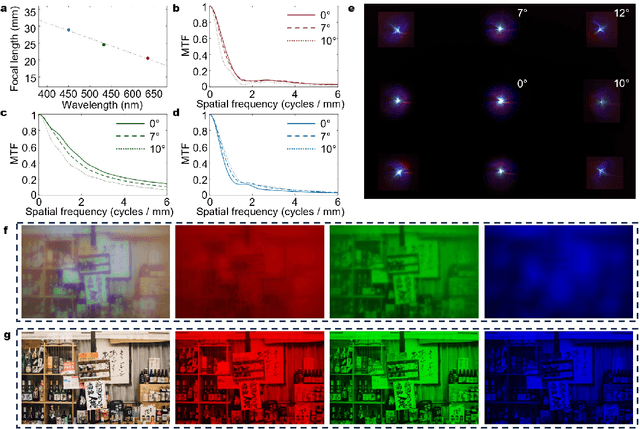
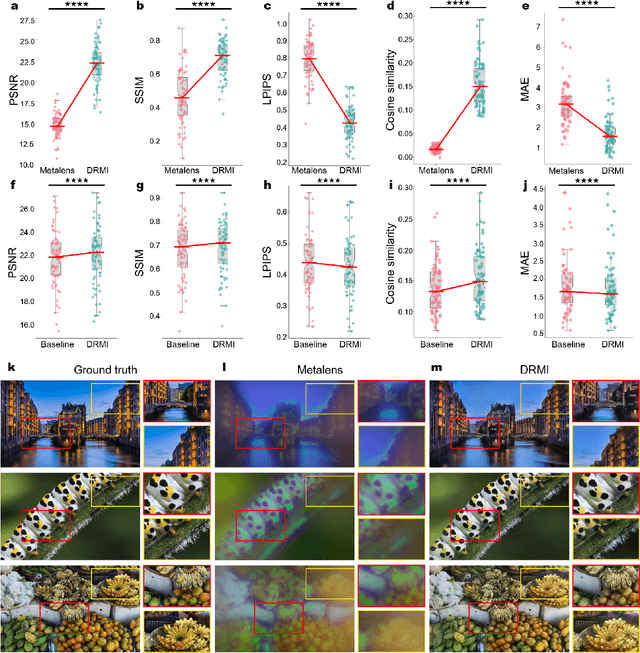
Abstract:Recent advances in metasurface lenses (metalenses) have shown great potential for opening a new era in compact imaging, photography, light detection and ranging (LiDAR), and virtual reality/augmented reality (VR/AR) applications. However, the fundamental trade-off between broadband focusing efficiency and operating bandwidth limits the performance of broadband metalenses, resulting in chromatic aberration, angular aberration, and a relatively low efficiency. In this study, a deep-learning-based image restoration framework is proposed to overcome these limitations and realize end-to-end metalens imaging, thereby achieving aberration-free full-color imaging for massproduced metalenses with 10-mm diameter. Neural network-assisted metalens imaging achieved a high resolution comparable to that of the ground truth image.
Explainable Product Classification for Customs
Nov 18, 2023Abstract:The task of assigning internationally accepted commodity codes (aka HS codes) to traded goods is a critical function of customs offices. Like court decisions made by judges, this task follows the doctrine of precedent and can be nontrivial even for experienced officers. Together with the Korea Customs Service (KCS), we propose a first-ever explainable decision supporting model that suggests the most likely subheadings (i.e., the first six digits) of the HS code. The model also provides reasoning for its suggestion in the form of a document that is interpretable by customs officers. We evaluated the model using 5,000 cases that recently received a classification request. The results showed that the top-3 suggestions made by our model had an accuracy of 93.9\% when classifying 925 challenging subheadings. A user study with 32 customs experts further confirmed that our algorithmic suggestions accompanied by explainable reasonings, can substantially reduce the time and effort taken by customs officers for classification reviews.
Classification of Goods Using Text Descriptions With Sentences Retrieval
Nov 02, 2021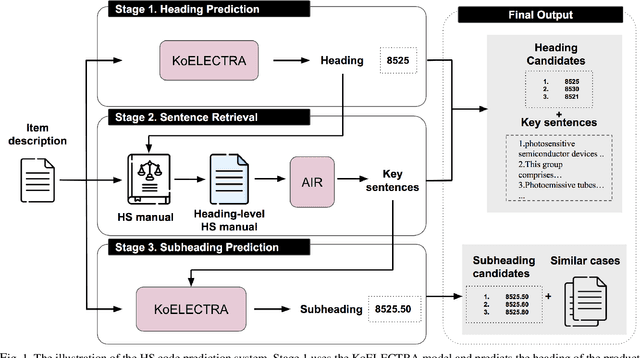
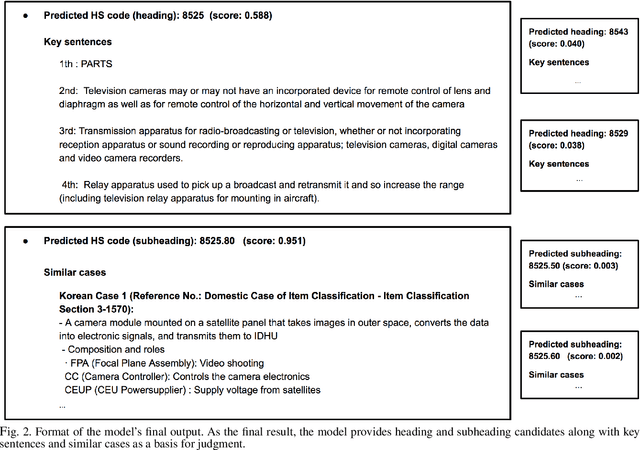
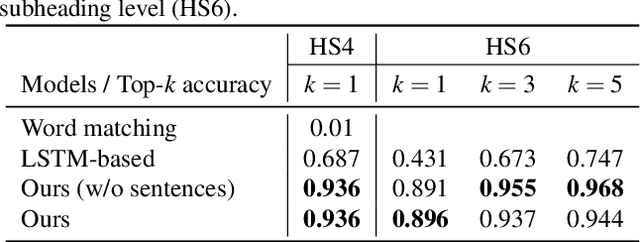
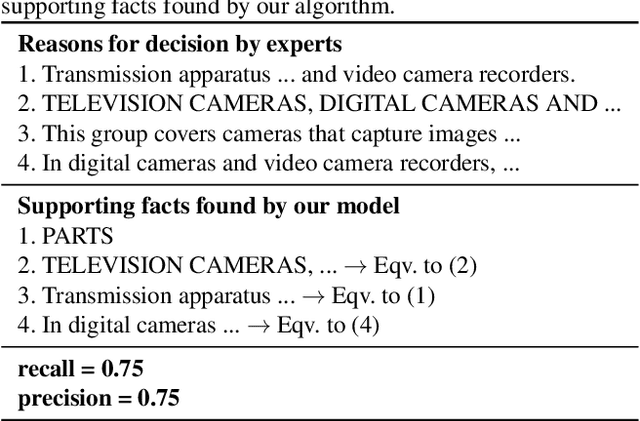
Abstract:The task of assigning and validating internationally accepted commodity code (HS code) to traded goods is one of the critical functions at the customs office. This decision is crucial to importers and exporters, as it determines the tariff rate. However, similar to court decisions made by judges, the task can be non-trivial even for experienced customs officers. The current paper proposes a deep learning model to assist this seemingly challenging HS code classification. Together with Korea Customs Service, we built a decision model based on KoELECTRA that suggests the most likely heading and subheadings (i.e., the first four and six digits) of the HS code. Evaluation on 129,084 past cases shows that the top-3 suggestions made by our model have an accuracy of 95.5% in classifying 265 subheadings. This promising result implies algorithms may reduce the time and effort taken by customs officers substantially by assisting the HS code classification task.
 Add to Chrome
Add to Chrome Add to Firefox
Add to Firefox Add to Edge
Add to Edge